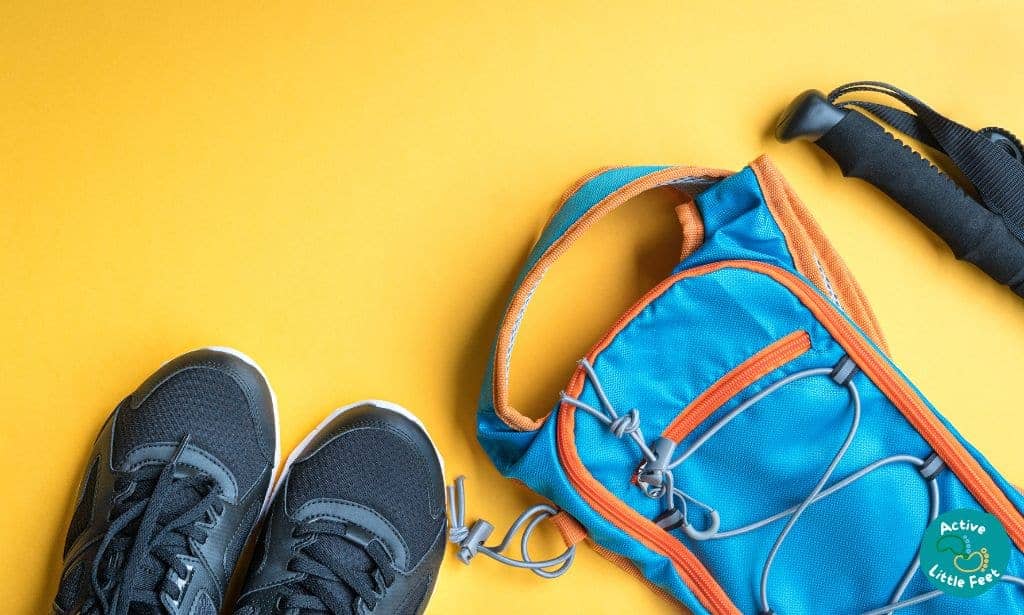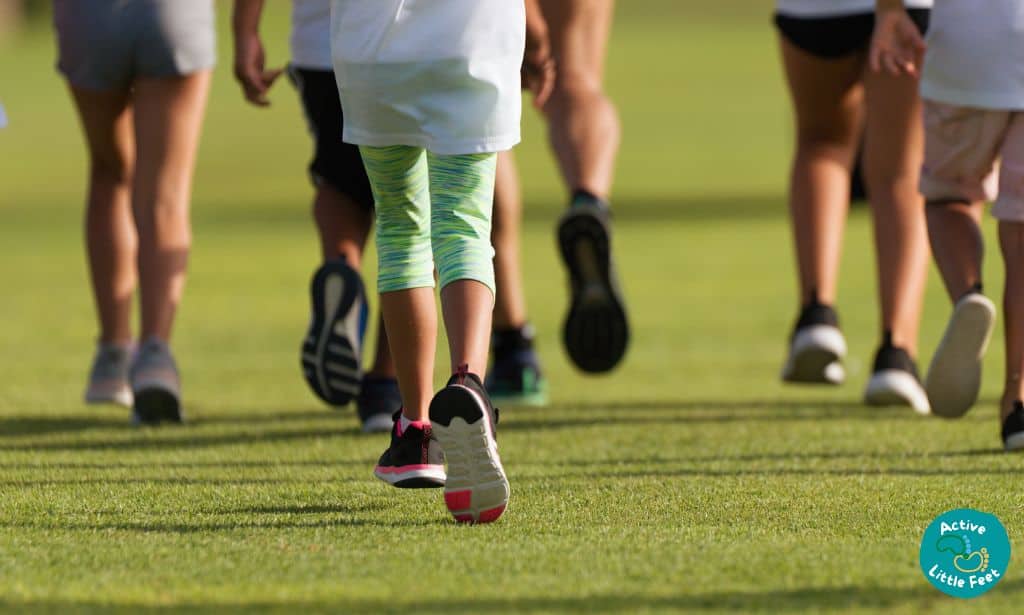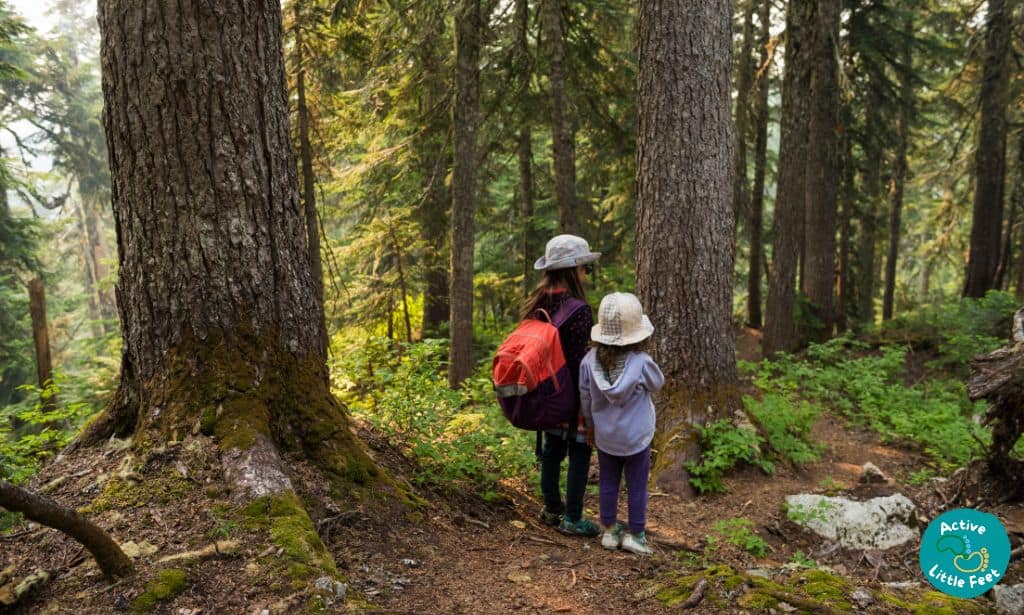If we are being honest, kids don’t really care what they wear to a hike unless it’s painfully uncomfortable. They will play, run and jump their hearts out regardless of what shoes they are wearing.
But if the child is slipping on rocks, getting their feet wet, falling all over and complaining of pain, it will be almost impossible to enjoy that hike, if you are lucky enough to go far. That is why a good pair of hiking shoes is important, even for kids.
If for nothing else, you are at least stacking the odds in your favor that you’ll be able to reach your destination without too many tears.
But how do you pick hiking shoes for kids?
We will do a quick run-down of specific and important guidelines to pay attention to when shopping for kid’s hiking shoes.
Choosing the Right Footwear for Kids on a Hike
While there’s to consider, they basically come down to two things; comfort and safety. A child will only wear a shoe if it’s comfortable, and we will discuss a few things that play into that. Besides taking off the shoe mid-hike, discomfort will also discourage a child from hiking again or doing outdoor activities altogether.
As for safety, you want a shoe that will protect your child from rocks, roots, water and accidents. It must have the features to ensure your child completes the hike with their feet intact. We will also discuss what makes a hiking shoe safe.
As a disclaimer, you do not necessarily have to buy hiking boots or shoes for kids. In many scenarios, any sporty and comfortable shoe will do because kids rarely go hiking in dangerous and tough terrains. But more on that later as well.

Factors to Consider when Looking for Hiking Shoes for Kids
Before we get into specific features in a shoe, there are questions you must ask;
Where?
Will the hike take place in rocky mountains, flat and paved paths, snowy terrains or uneven forest? We have discussed types of hikes here. Find out also if there are streams on the way or puddles of water because kids will definitely want to get in.
Because of this, we have different shoes to cater for the different terrains. A 5-mile walk down a flat, paved trail will not require hiking boots. Their regular tennis shoes or sneakers will suffice.
When?
The best hiking shoe for kids must be season appropriate. As good as hiking boots are, they will be more than uncomfortable in the summer heat.
Related: What To Do When Temperatures Are Too Cold to Hike with Kids.
Here are rules to abide by;
- Heavy, high-cut hiking shoes for winter and demi-season
- Light, lower-cut hiking shoes for warmer weather
- Breathable sandal-type shoes for the summers
Let’s get to the details now.
Traction
Support would be the number one factor to consider in hiking boots for adults but not kids. But children take every opportunity to climb every rock, run down every hill, and test everything they see, from logs to water puddles.
Since there’s little you can do about that, the best next thing is to provide shoes with good traction and grip. At least you know they won’t slip and slide over everything, and the chances of getting home safely are better.
Now, support comes very close to this because kids, as well as adults, need shoes that will hold the feet snugly when hiking. While it should not be too tight, a good hiking shoe should support the arch and ensure the ankles don’t roll when walking over rocks and slippery places.
Water-Proof
Again, kids are kids, and they will run into water every damn time. The problem with this is that they won’t be comfortable walking in wet slippery shoes after that, so the hike is ruined.
This is what I like about hiking shoes- they are water-proof and high enough that water won’t get inside. This also means the shoes are heavy and don’t breathe as well, but you have to compromise somewhere, don’t you?
Lightweight and Flexible
We talked about comfort earlier, and a few things make a shoe comfortable. Right size is one because the feet need ample space in there. To check if it’s the right size, insert a finger between the child’s heel and the shoe when they are trying them on. The finger should go in comfortably, but the shoe is too big if there’s still space.
Size aside, kid’s shoes should ALWAYS be lightweight and flexible. Heavy, rigid shoes are uncomfortable to walk in, and they make it harder to maneuver around things like roots and fallen trees along the path.
This is the main reason we recommend hiking boots as the last option for kids. The idea is fantastic, but it does not work for kids. Instead, go for light but well-built shoes like trail runners, walking shoes and tennis shoes that support natural movement, have a good center of gravity and won’t tire the child.
Bumptoes/ Reinforced Toe Guards
Remember when you hit your big toe on a rock? Yes, that is a pain none of us will forget. Kids hit their toes on things, even when they are not trying to. It’s a phenomenon we can’t explain or avoid, especially when hiking and rocks and roots are on the way.
The best we can do again is provide them with shoes that will protect their poor toes. I always make sure my kid’s hiking shoes have reinforced rubber toes. Toe guards also make the shoes last longer if you didn’t know.
Velcro Closure
The number one advice our daughter’s PE teacher gave us on shoes is to ditch the laces. Very few kids can tie their laces, and they make wearing shoes a pain in their behind.
Instead, go with hiking shoes that have Velcro straps. They are easy to yank open and close, and they provide the support and snugness every active child needs.

Hiking Shoes vs. Tennis Shoes
Does your child need hiking shoes if they own a pair of comfortable tennis shoes?
Again, it depends on the hiking conditions. Tennis shoes are made for court surfaces, so they feature a herringbone outsole to handle the hard and sometimes slippery surface and grass. They also have enough traction for lateral motion, and they are light enough to make movement easy. This makes them perfect for easy hiking trails and mildly challenging situations. At least they are better than everyday sneakers or running shoes for hiking.
On the downside, tennis shoes lack the cushioning that helps absorb shock or offer support when carrying weight. This is less important for kids because they rarely carry any luggage anyway. Nonetheless, the outsole of tennis shoes does not have enough tread and traction to handle roots, mud, rocks and rugged, uneven terrain. Plus they are not waterproof or warm enough inside for wet conditions.
Hiking Shoes vs. Trail Runners vs. Running Shoes
Hiking shoes vs. trail runners? Is there a difference, and which is a better hiking shoe for kids? How about running shoes?
Let’s tackle the difference between hiking shoes and trail runners first. The two are very similar in that they are designed to excel in rockier, more aggressive terrain, so they boast lugged outsoles, a more rigid midsole for support and excellent traction. Both shoes also offer minimum ankle support compared to hiking boots.
But here are the differences;
Hiking shoes are tougher and more durable because their upper is made of tough leather or nylon mesh. The outsoles and midsoles are also thicker to withstand the beating of rough terrain and also protect your feet from feeling the impact of rocks. You will also find most hiking shoes with a toe bumper and waterproof capabilities.
Because of their design and materials, hiking shoes are heavier and less breathable.
Trail runners come to solve these two problems. They are designed to provide optimal breathability and flexibility during runs, and they are also very lightweight and cushioned. In fact, hiking on trail runners feels like walking on clouds.
On the downside, trail runners are less durable than hiking shoes, so you will be ordering new ones often. They also do not offer as good protection as hiking shoes when hiking in rough, rooty and rocky terrain.

How about running shoes?
Well, the anatomy of running shoes fall in the same category as sneakers. They are superiorly comfortable, affordable and the kid probably already has a pair at home that he loves to wear often. This makes them perfect for beginner hikers and short, easy hikes.
The problem with running shoes is that they are specially designed for a whole other terrain. First, the shoe’s upper is made of breathable mesh fabric and has no toe bumps, which means zero protection for your toes. The sole is also not tough enough to cushion you from the tough rocks and roots found in hiking trails. What’s more, they do not have the proper traction and grip for wet or rocky surfaces.
The biggest disadvantage, however, is that running shoes are designed for forward motion, so they provide limited side support. Hiking calls for superior 360-degree support because the surface is uneven. So, while a child can definitely hike with running shoes, it’s only for limited circumstances.
Can Kids Hike in Sneakers?
Yes, sneakers are a fantastic option for kids who are new to hiking or when the trail is relatively flat, even and short. Of all the sports shoes that people use to hike, sneakers and running shoes must be the most affordable and accessible. I guarantee every child has a pair of comfortable sneakers or several at home. They are light, easy to wear and really comfy because the child is already used to wearing them.
That said, sneakers provide less support, protection and traction than hiking shoes or even trail running shoes. The light material used on sneakers means your feet are not protected enough, plus durability will be compromised. The sneakers’ flat sole is also unsuitable for rocky, slippery terrains.
While sneakers are a viable option for kids when hiking, consider the terrain first. Again, the shoe design must fit the activity, and sneakers do not fit most hiking terrains.

Hiking Boots vs. Sport Shoes
Kids hiking boots are pricey, heavy and uncomfortable for most kids, especially in summer. You may therefore be wondering if they are worth it. Yes, hiking boots will be worth it if you go to rocky or snowy trails, places with moderate elevation gain or drop, and anywhere you will come across water.
They provide the traction and protection your child needs and balance in such situations.
That said, kids rarely hike to such places or carry anything heavy. They therefore do not require the high-top ankle support hiking boots provide or the weight absorption. In fact, Dr. Matt Hart, a sports podiatrist at ACE Feet in Motion recommends everyday sports shoes for kids over hiking boots because of comfort.
We are trying to encourage kids to love hiking, not associate it with discomfort.
The shoes you pick, however, must still have good traction, breathability, and toe guards. Depending on the weather and destination, our kids alternate between tennis shoes, runners and their hiking sandals in summer. In fact, we did not buy hiking boots until the youngest was six, and they still rarely wear them.




